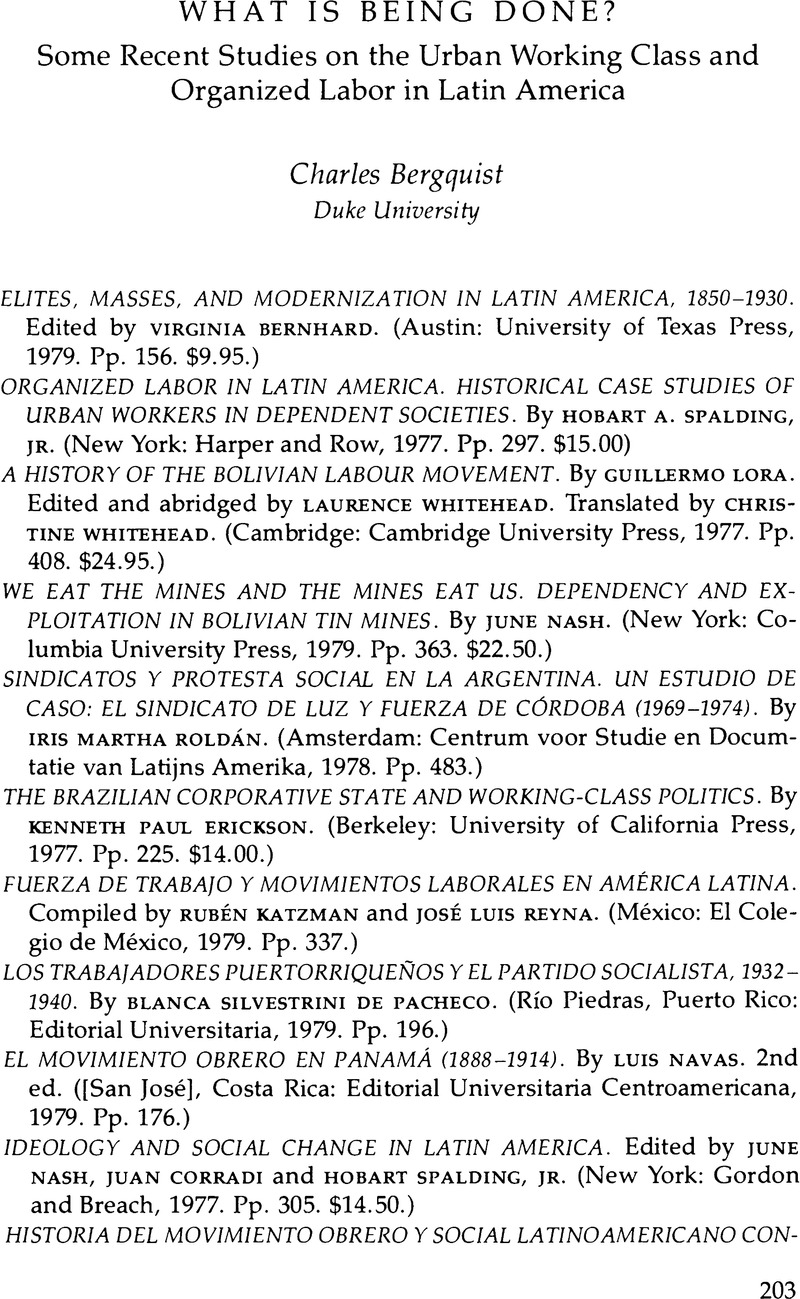Published online by Cambridge University Press: 24 October 2022

1. “Research on the Urban Working Class and Organized Labor in Argentina, Brazil, and Chile: What is Left to Be Done? LARR 9, no. 2 (1974):115–42.
2. Peter Winn, “Oral History and the Factory Study: New Approaches to Labor History,” LARR 14, no. 2 (1979):130-40; Eugene F. Sofer, “Recent Trends in Latin American Labor Historiography,” LARR 15, no. 1 (1980):167–76.
3. The book, a published version of lectures delivered in 1978 at the University of St. Thomas in Houston, Texas, includes, in addition to Skidmore's essay, another major essay by E. Bradford Burns entitled “Culture in Conflict: The Implication of Modernization in Nineteenth-Century Latin America,” and a critical introduction by Richard Graham.
4. LARR 15, no. 1 (1980):167–82.
5. A discussion of the significance and promise of this new conceptual approach is Charles W. Bergquist, “Latin American History in World Perspective: A Dissenting View,” in Georg G. Iggers and Harold T. Parker, eds., International Handbook of Historical Studies: Contemporary Research and Theory (Westport, Conn.: Greenwood Press, 1979).
6. Early, archetypical expressions of the two currents within the dependency approach are Osvaldo Sunkel, with the collaboration of Pedro Paz, El subdesarrollo y la teoría del desarrollo (México: Siglo XXI, 1971) and André Gunder Frank, Capitalism and Underdevelopment in Latin America (New York: Monthly Review, 1967).
7. I have attempted to apply this approach in some detail to the history of Argentina and Chile in “ ‘Bourgeoisification’ and ‘Proletarianization’ in the Latin American Periphery: Working-Class Politics in Argentina and Chile Compared,” paper given at the Third Political Economy of the World System Conference, The Braudel Center, May 1979.
8. Nash has published two autobiographies drawn from these same materials. Juan Rojas and June Nash, He agotado mi vida en la mina (Buenos Aires: Nueva Visión, 1976) and Dos mujeres indígenas: Basilia (México: Instituto Indigenista Interamericano, 1976). The first has now been put on film, I Spent My Life in the Mines (Bolivia, 1977). A third informant for Nash was Domitila Barrios de Chungara, whose Let Me Speak!, originally published in Spanish, is now available in English (Monthly Review, 1978).
9. “Results and Prospects: Some Observations on Latin American Labor Studies,” International Labor and Working Class History 16 (Fall 1979):29–39.